Gardenwatch results
Understanding our garden wildlife is becoming increasingly important. Gardenwatch, the UK’s biggest-ever garden audit, was launched on BBC Springwatch in May 2019, and asked people for information on garden features and wildlife across the country.
The responses, received from more than 130,000 gardens, have given us fascinating new information on what people do to help wildlife in their gardens, and where there is still more that can be done. The different 'Missions' asked what mammals and invertebrates were found in gardens, and the bird surveys focused on exactly how birds were seen using garden resources. These results will help us build a comprehensive picture of how gardens can help UK wildlife species to thrive in the future.
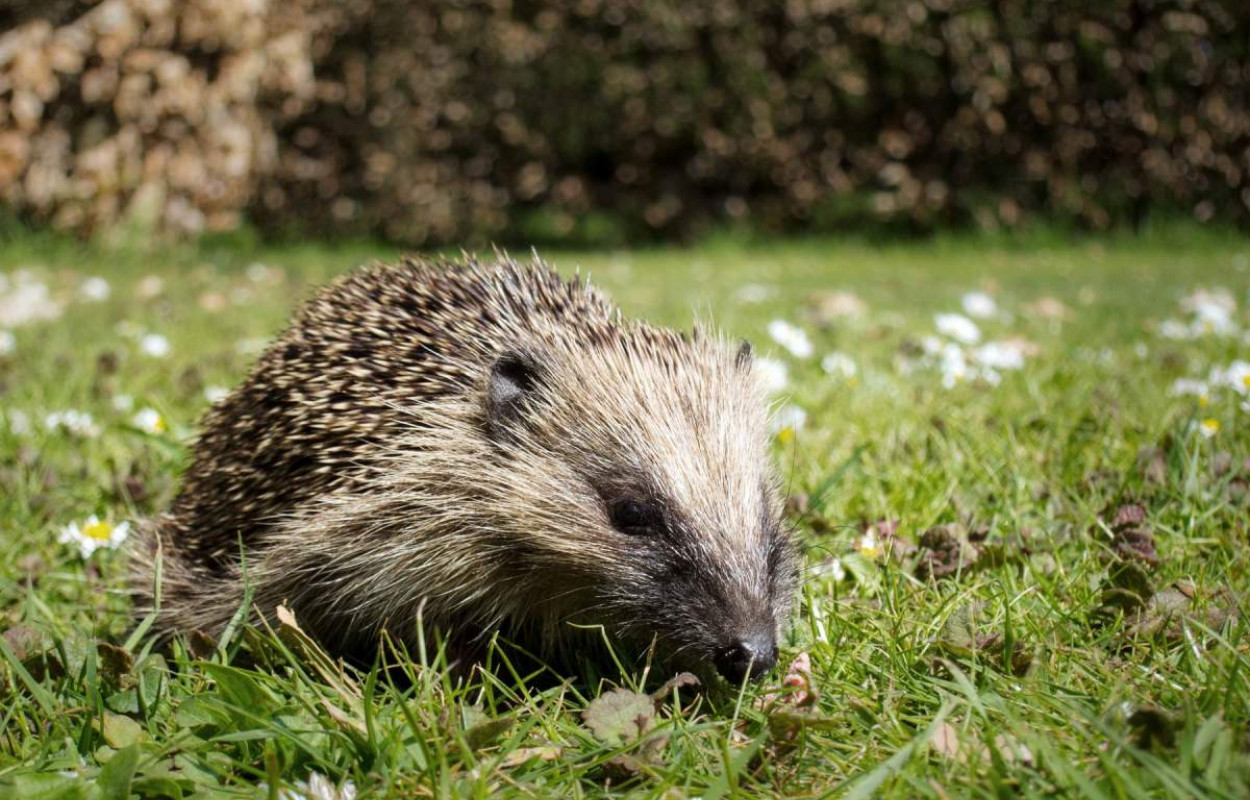
We can all make small changes in our own gardens that can benefit wildlife, but knowing exactly what changes are needed, and where, requires a better understanding of the current status of UK gardens and greater knowledge of the wildlife that uses them.
The Gardenwatch project
As towns and cities expand and become more densely populated, gardens are becoming an increasingly vital refuge for wildlife. We can all make small changes in our own gardens that can benefit wildlife, but knowing exactly what changes are needed, and where, requires a better understanding of the current status of UK gardens and greater knowledge of the wildlife that uses them.
Gardenwatch, a collaboration between BBC Springwatch, the British Trust for Ornithology (BTO) and the Open University (OU), was designed to address this gap in knowledge. This project set out to conduct the UK’s biggest ever garden audit, mapping the resources available for wildlife in gardens up and down the country, and surveying some of the wild visitors they attract. The scheme was launched on BBC Springwatch in May 2019 and remained open to submissions until August 2019.
Springwatch viewers were encouraged to participate in four Gardenwatch ‘Missions’: Beyond the Backdoor, Worm Detective, Bird Detective and Mammal Detective, and here we present summary figures and maps. A few selected highlights have been featured on our 'how you can help wildlife' factsheets.
The next step will be to understand the real value of these resources to wildlife by bringing together the results from the different missions. The ultimate aim of the project is to address specific questions about garden soil invertebrates, birds and mammals, the associations between them, and the garden resources that they need.
Gardens in central England had lower uptake of wild areas, leaf piles and long grass, so this is an area where people could consider creating some of these habitats.
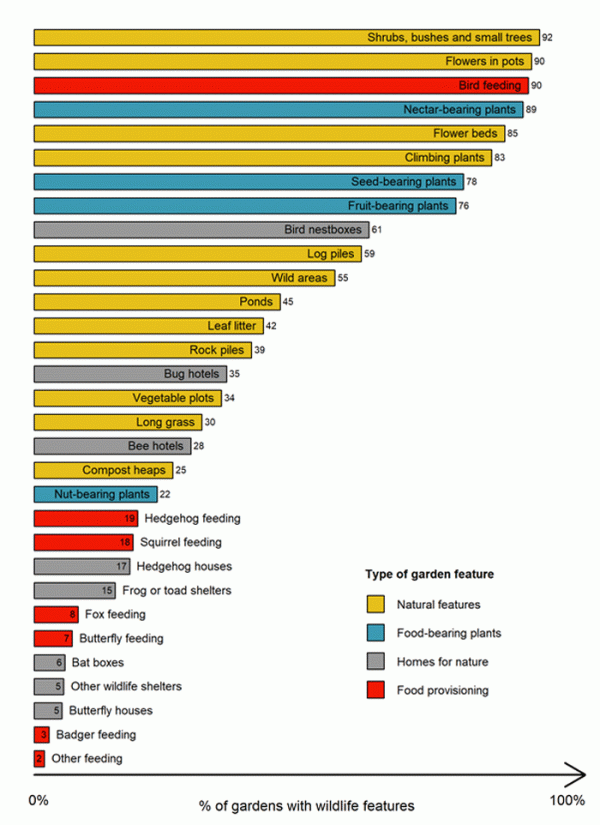
Beyond the backdoor
Gardenwatch succeeded in attracting a high level of participation, with good coverage across the whole of the UK. Surveyed gardens also included a broad range of garden types, giving an early indication that they are broadly representative of UK gardens more generally. There are a number of key take-home messages from our mapping of garden features:
-
With 45% of participants reporting having a pond, it seems that advice about the importance of garden ponds is taking effect. However, the findings indicate that take-up could be improved in Scotland.
- The distribution of garden rock and stone piles seems to reflect the underlying geology of the UK, with much lower uptake in southern England and particularly Essex. Rockeries can be important habitat for invertebrates and reptiles, as well as shelter for small mammals and amphibians, so people who do not already naturally have rocks in their garden could consider creating a rockery habitat.
- Although the uptake of garden log piles was reasonably high, the findings indicate that as many as 40% of gardens do not have a log pile. This is an easy habitat to create, which can support a huge diversity of wildlife, and could easily be installed in almost every kind of garden.
- Gardens in central England had lower uptake of wild areas, leaf piles and long grass, so this is an area where people could consider creating some of these habitats. We find that lawns comprise approximately half of the total area of people’s gardens, yet only 30% of people are leaving grass to grow long, which is a very simple and easy measure to improve the wildlife value of gardens. Only 42% of people reported leaving leaf piles; autumn is the perfect time of year to create this valuable invertebrate habitat.
- The results suggest that climbing plants are more prevalent in gardens in the south compared to northern England, Northern Ireland and Scotland. This might be a result of the general distribution of climbing plants, such as Ivy, but could be worth addressing given their value in providing shelter, breeding locations and food for birds in particular.
- The prevalence of flower beds, flowers in pots and nectar-bearing plants in gardens is high throughout the UK. These have the potential to be valuable resources for pollinators, and further conversations about which are the best nectar and pollen bearing plants and flowers for different species could be advantageous.
- There is an obvious bias towards providing boxes and food for birds compared to other forms of wildlife. For example, the uptake of bird nest boxes was high compared to bat boxes and other 'homes for wildlife'. Though there was a reasonable uptake of bee and bug hotels, this was mainly in southern and eastern areas, suggesting that these provisioned resources could be something for people in other areas to consider installing.
- Hedgehog feeding and Hedgehog houses are in less than 20% of gardens. With Hedgehog numbers in severe decline, and the potential importance of gardens as a habitat for this species, it could be especially rewarding for more people to consider providing garden resources to support Hedgehogs. It is obviously important, however, to be aware of good practice and education.
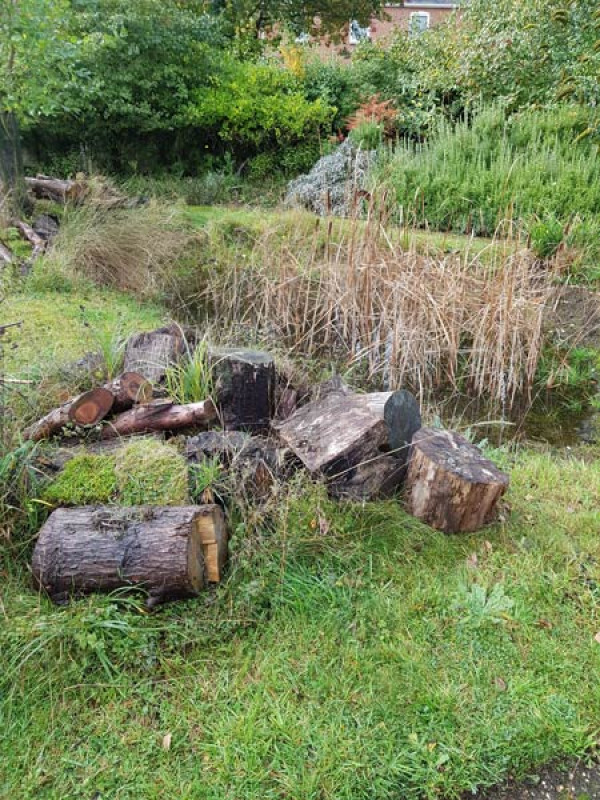
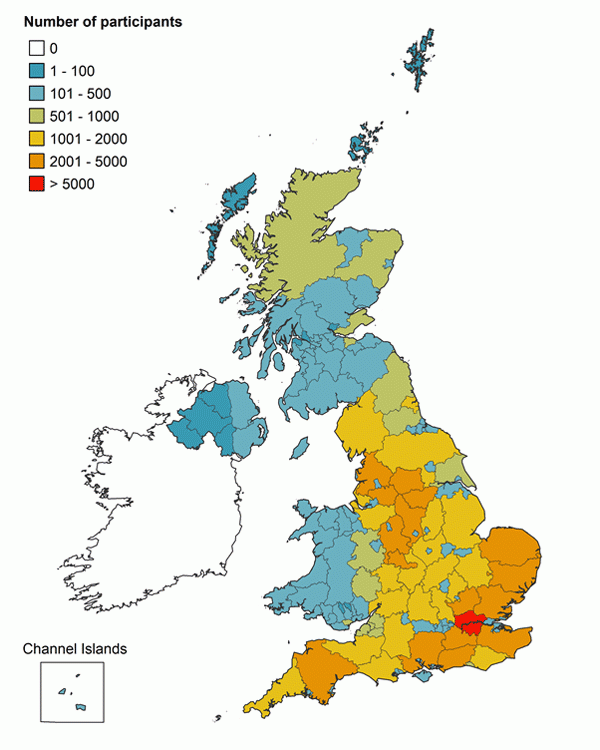
Garden types and participation
A total of 221,881 missions were completed (excluding incomplete and duplicate records), of which 118,664 were ‘Beyond the Backdoor’. An average of 786 households participated in ‘Beyond the Backdoor’ per UK county / unitary authority (UA), ranging from 2 in Isles of Scilly to 6,342 in Greater London (Figure 1). Further, although there is some obviously variation in the distribution of Gardenwatch participants, there are no gaps in coverage, and as such we can confidently map the spatial distribution of garden habitats, resources and wildlife. As a further indication of the representativeness of the survey participants of the actual number of gardens in different parts of the UK, we have calculated participation as a proportion of overall population density in each region (Figure 2).
|
Country |
Beyond the Backdoor |
|
ENGLAND |
102,567 |
|
WALES |
6,217 |
|
SCOTLAND |
8,539 |
|
NORTHERN IRELAND |
1,007 |
|
CHANNEL ISLANDS |
198 |
|
ISLE OF MAN |
136 |
|
** TOTAL ** |
118,664 |
The large majority of sites participating in Gardenwatch were private gardens (94.3%, Table 2), with each of the other site types described making up less than 2% of the total Beyond the Backdoor dataset. Although proportionally small, there are still reasonable numbers of communal gardens, balconies and allotments represented and, therefore, future research with a narrower focus on these particular garden types is possible.
Surveyed gardens were well distributed along a spectrum of sizes and urban contexts (Figure 3a and 3b). Garden composition was also highly variable, with a median of 20% coverage by hard surfaces and 50% by lawn (Figure 3c). The majority of participants reported being able to see 3-10 or 11-100 trees beyond their site’s boundary (Figure 3d), suggesting that many of the sites have a good degree of connectivity to the wider landscape.
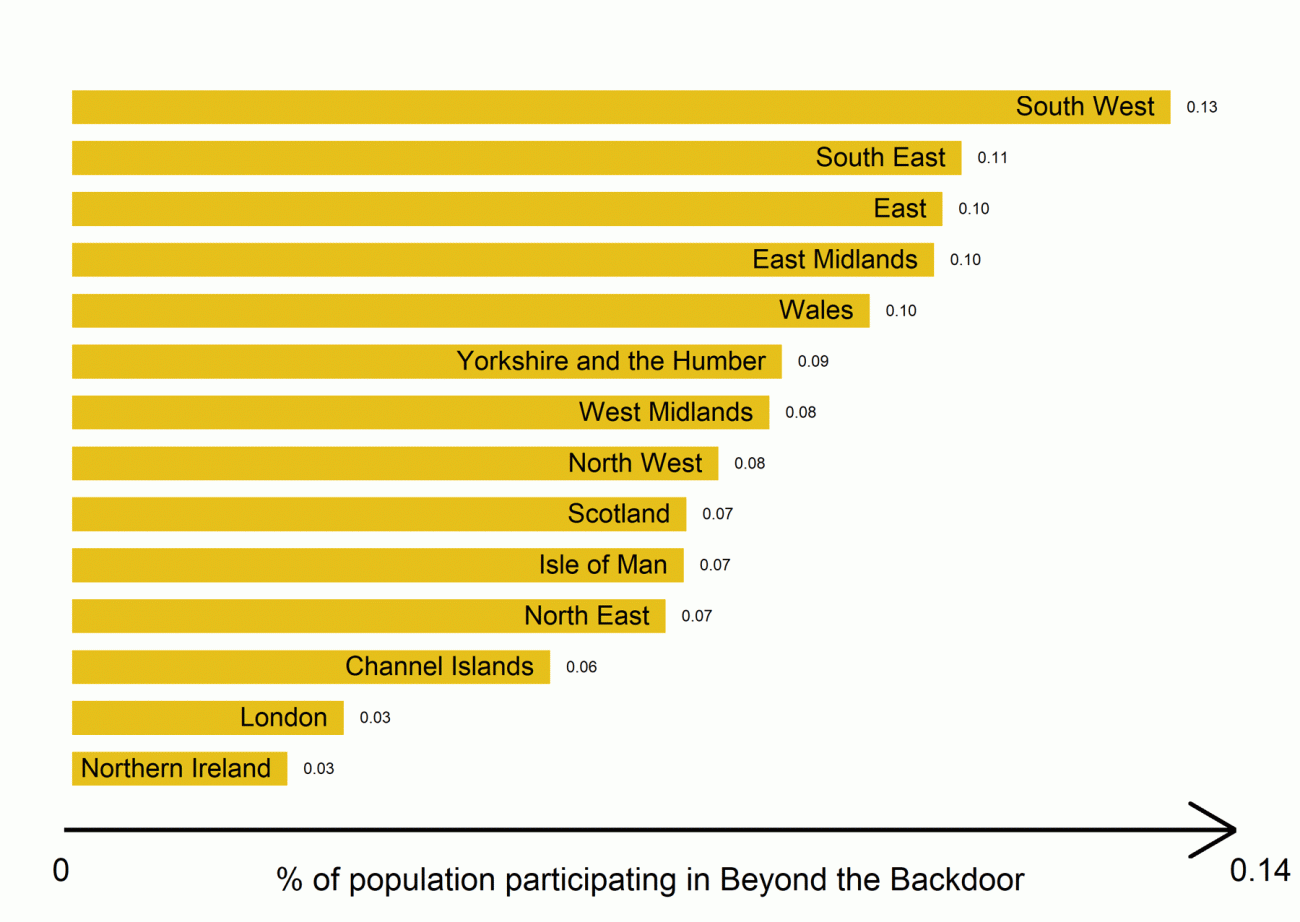
The majority of participants reported being able to see 3-10 or 11-100 trees beyond their site’s boundary (Figure 3d), suggesting that many of the sites have a good degree of connectivity to the wider landscape.
|
Garden type |
Count |
% of all sites |
|
Private gardens |
117,359 |
94.3 |
|
Shared or communal gardens |
1,807 |
1.5 |
|
Courtyards |
1,670 |
1.3 |
|
Others |
821 |
0.7 |
|
Balconies or terraces |
675 |
0.5 |
|
Allotments |
438 |
0.4 |
|
Public greenspaces |
198 |
0.2 |
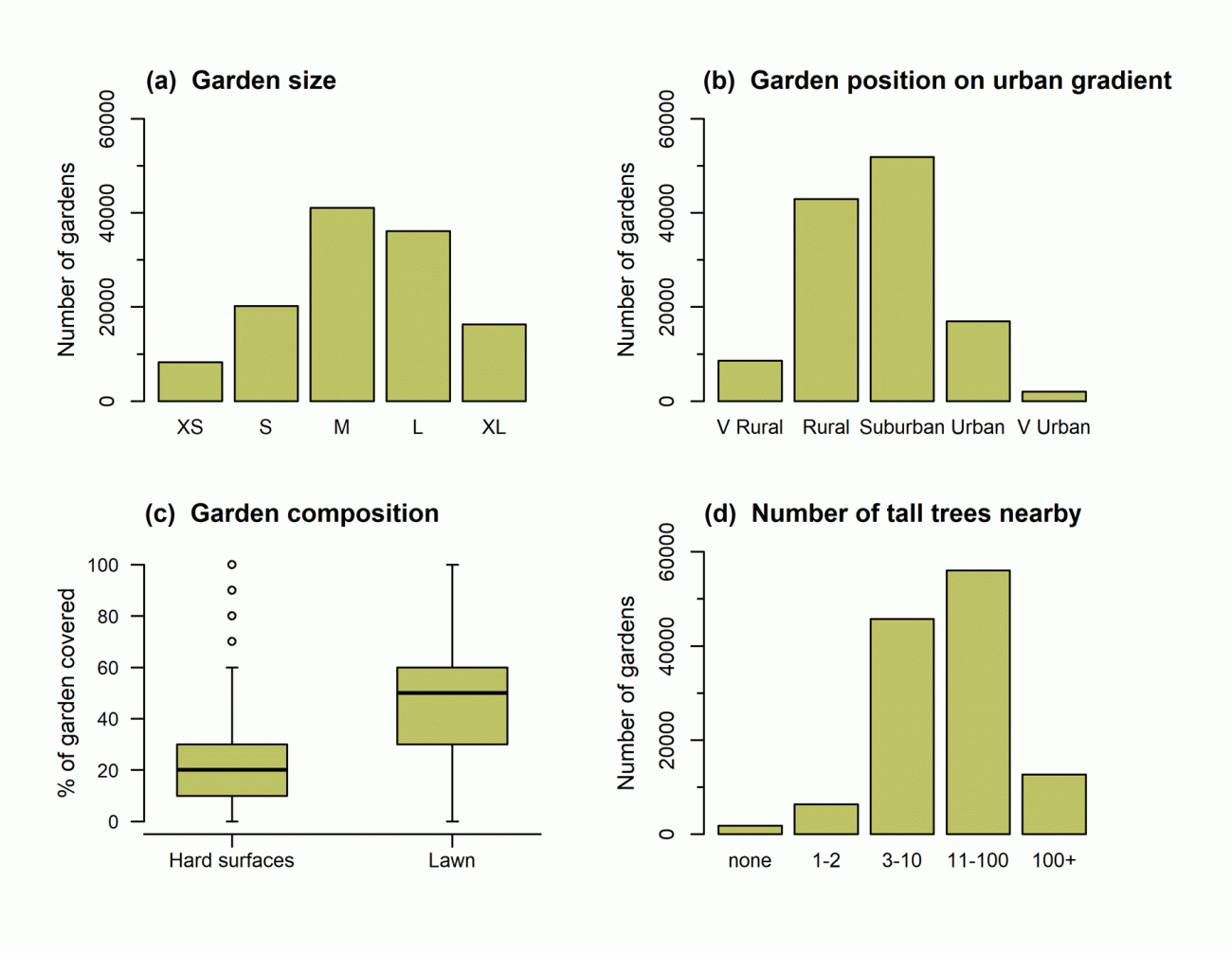
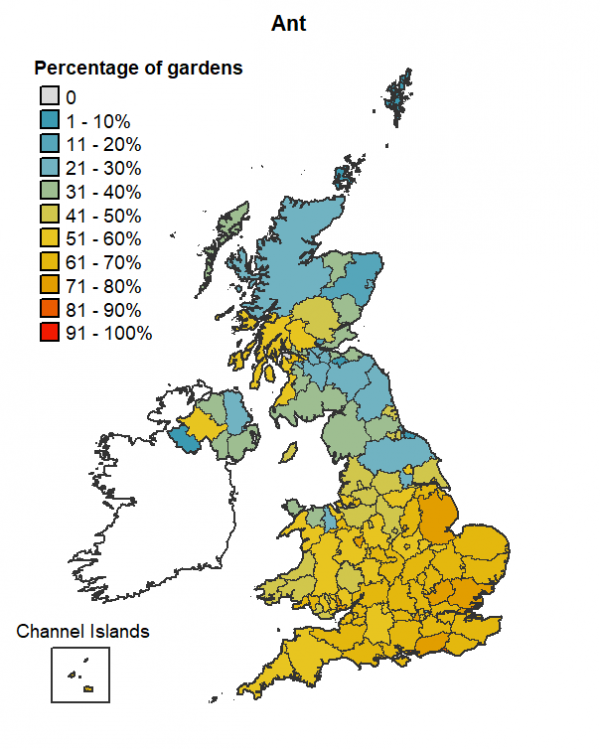
Worm Detective
Soil invertebrates, including earthworms, are keystone species in the natural environment. Not only do they help to keep ecosystems healthy, they are also an essential part of the diet of many birds and mammals. The aim of Worm Detective was estimate how abundant this vital food source is in different garden habitats.
Across the UK, 8,849 gardens participated in the Worm Detective mission, counting a total of 340,791 invertebrates, with ants, worms and woodlice comprising 70% of all individuals recorded. Worms were the group most frequently encountered, occurring in 86% of surveyed gardens.
Of the soil invertebrates counted, ants showed a clear difference between northern and southern parts of the UK, being recorded in a higher percentage of gardens in the south. Previous research shows that ants are found in warmer areas, and they are thought likely to be positively impacted by warming, with many species projected to expand their range within the UK in response to climate change.
Bird Detective
Gardens have a vital role to play in sustaining bird populations by providing the resources they need to breed and feed. The aim of Bird Detective was to record bird behaviour in gardens (specifically feeding, nesting, sheltering or using water) in order to estimate the causes of garden use in different habitat contexts.
Across the UK, 55,479 gardens participated in the Bird Detective mission, and the most widespread bird was the Blackbird, being seen in 95% of gardens.
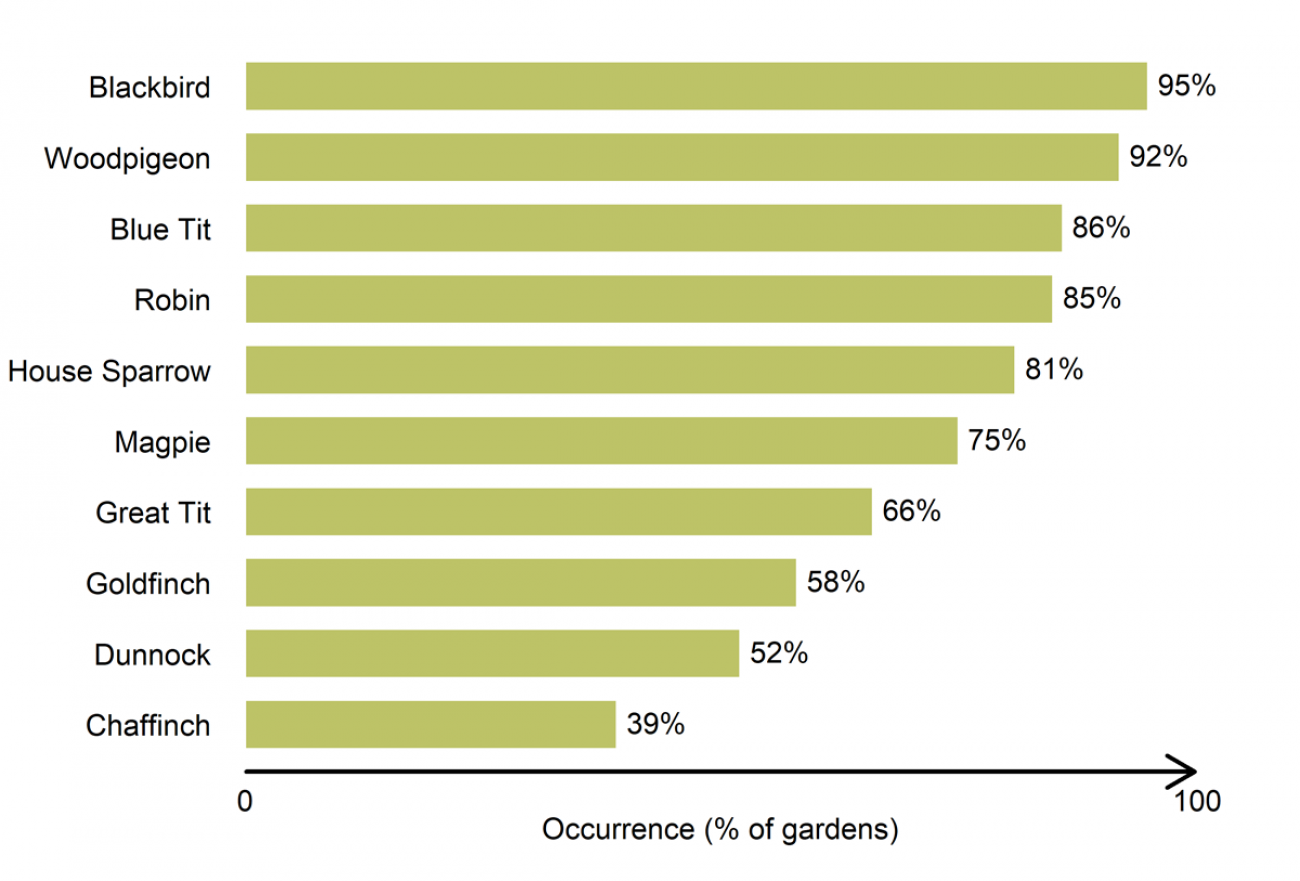
A new finding from the Bird Detective mission is the percentage of gardens recording key bird behaviours, comparisons which could be used in future to investigate how gardens are important for different species.
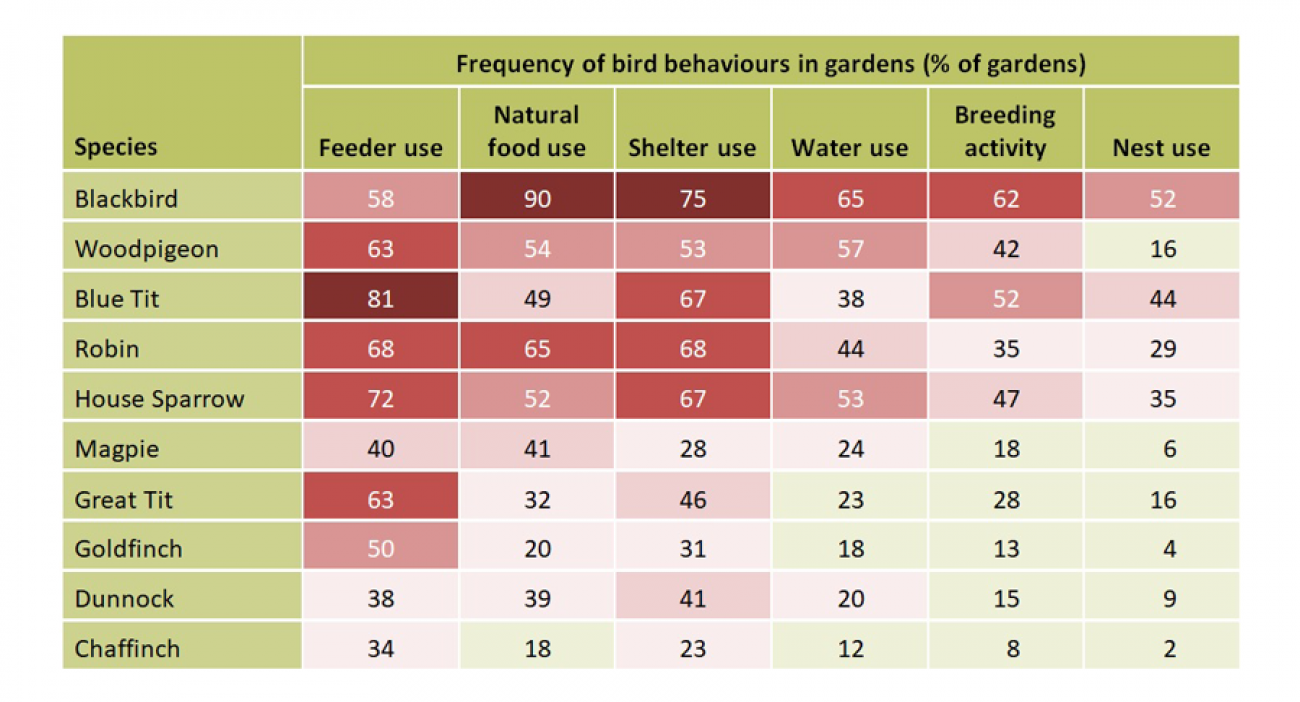
Mammal Detective
The aim of Mammal Detective was to quantify the frequency of garden use by different species (groups) of mammal, in order to better understand the extent to which mammals use gardens and which resources are most important to their survival.
Across the UK, 33,566 gardens participated in the Mammal Detective mission.
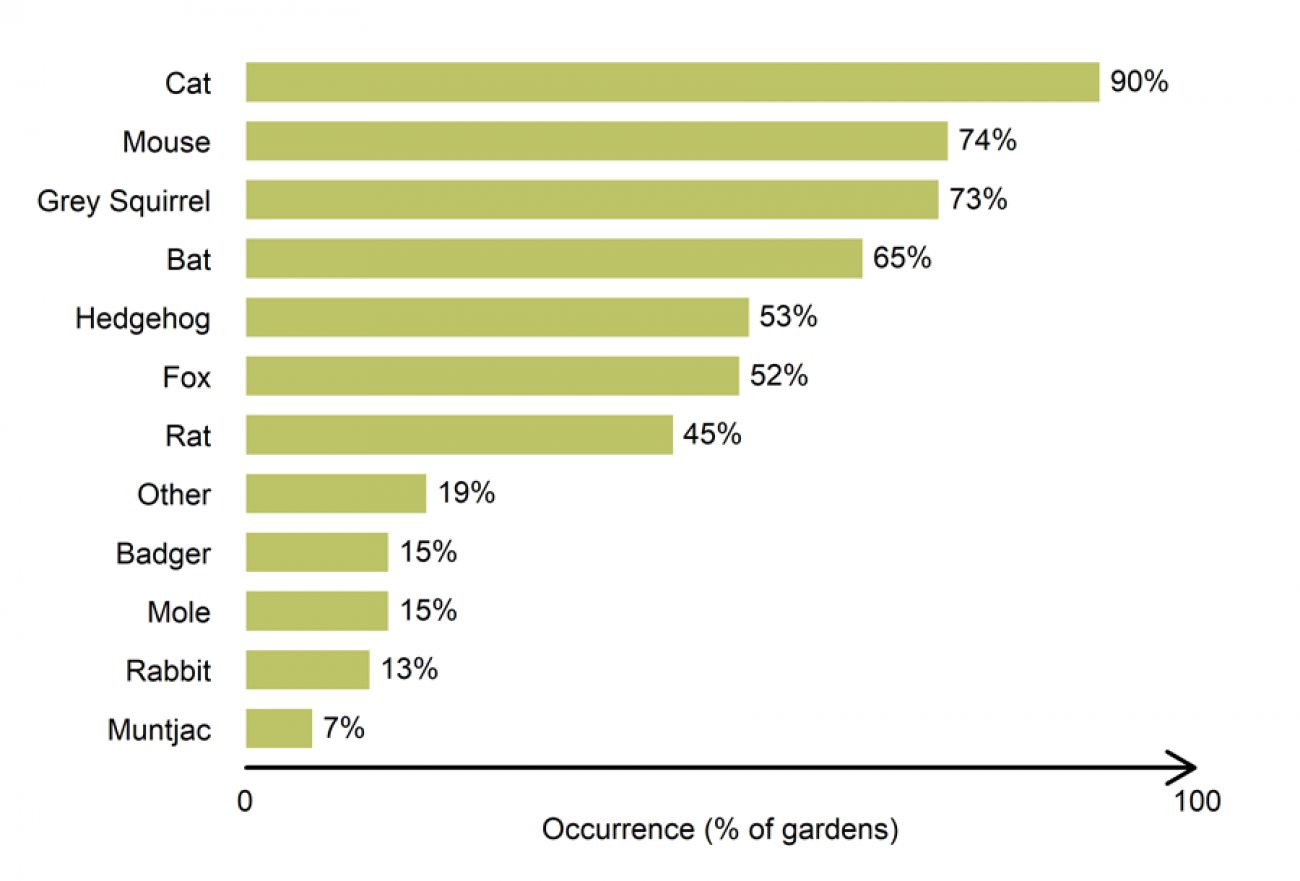
This is an abbreviated version of the full Gardenwatch interim report by Kate Plummer, October 2019. For more information about the interim report, including detailed methods, please contact BTO. This interim report is a preliminary exploration of the data only, and data may be re-analysed before final publication.
We would like to thank everyone who submitted their garden records to this exciting project, as well as our colleagues at BTO, the BBC and the OU who have made this project possible.
Join GBW for free
Take PartIf you took part in Gardenwatch, you'll enjoy our year-round Garden BirdWatch survey. It has been going for nearly 25 years, with over 18,000 people telling us what birds and other wildlife are using their gardens. By sending in weekly lists, our Garden BirdWatchers help with important research into the importance of gardens for wildlife.
Stay connected to nature, learn about your garden wildlife and contribute to important scientific research without leaving your home. We're giving everyone free access to BTO Garden BirdWatch during the COVID-19 lockdown.
How to help the wildlife in your garden
The data collected by Gardenwatch will serve as a resource for wildlife gardening research for many years to come, but we have drawn together some of the immediate highlights in a set of handy factsheets on key species. Browse and download them today.
View our garden wildlife guides
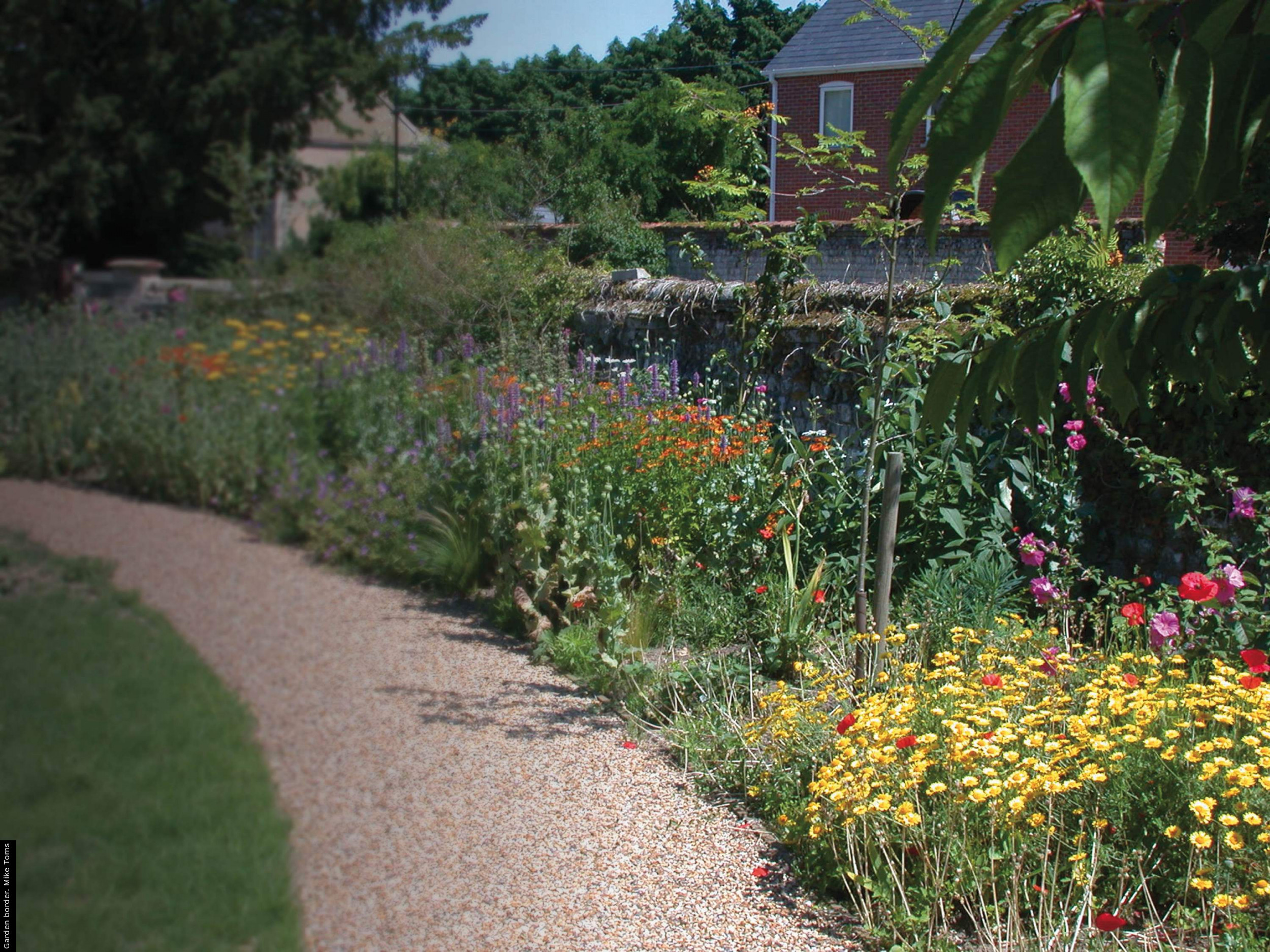

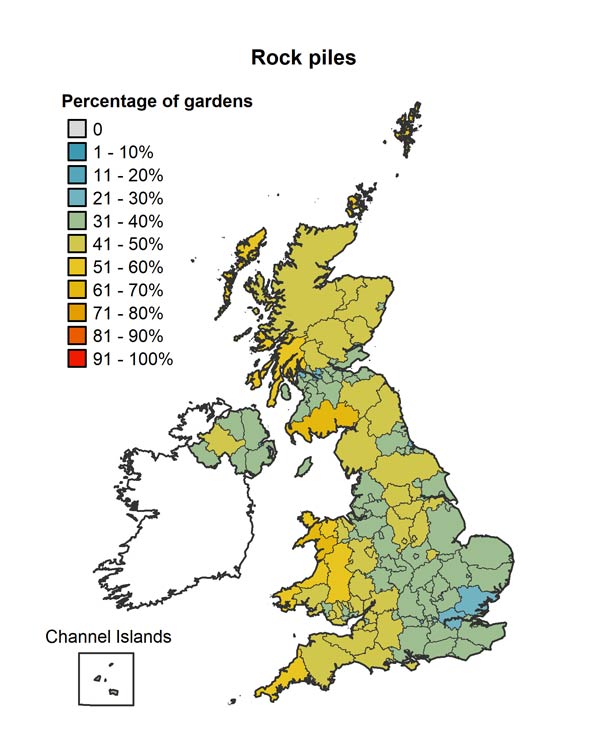

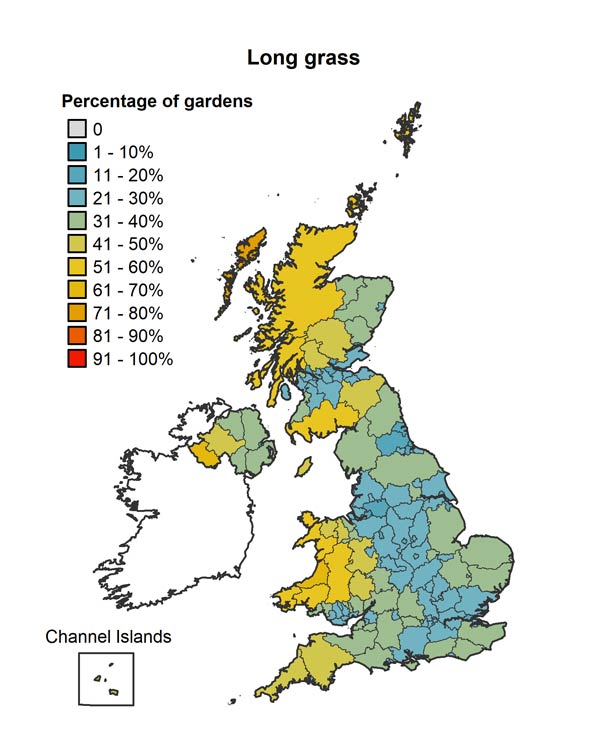


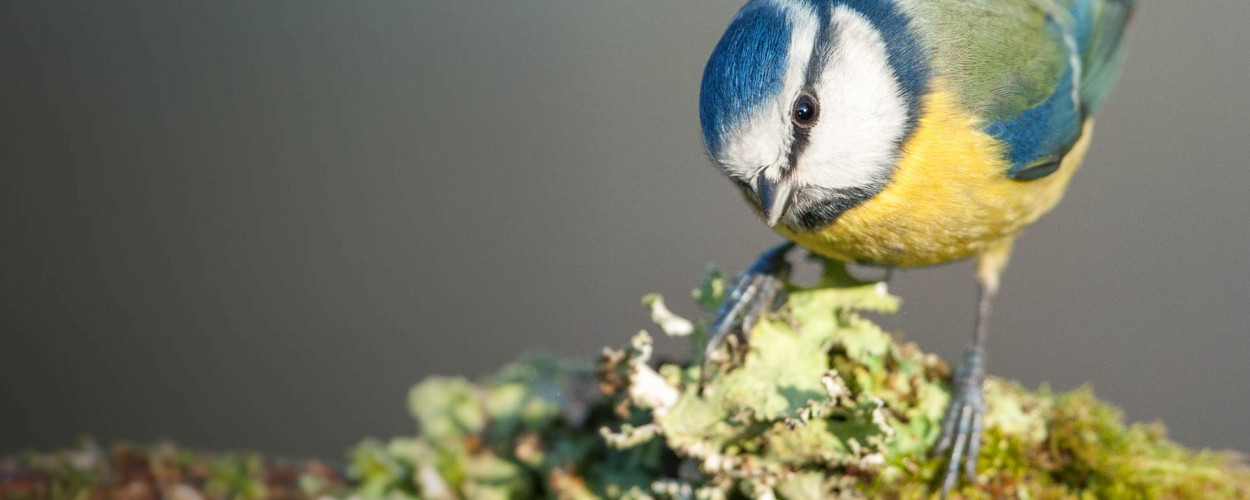
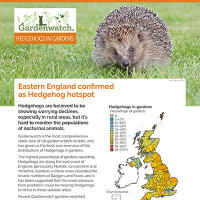
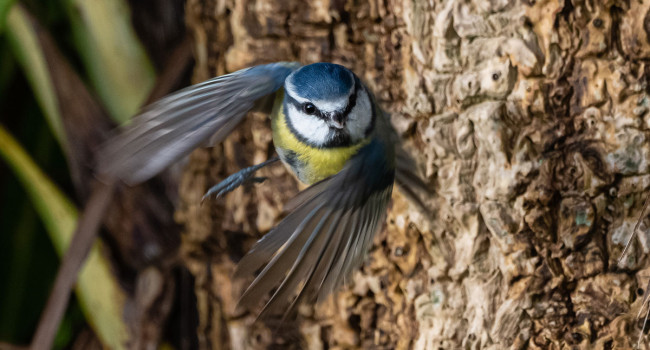
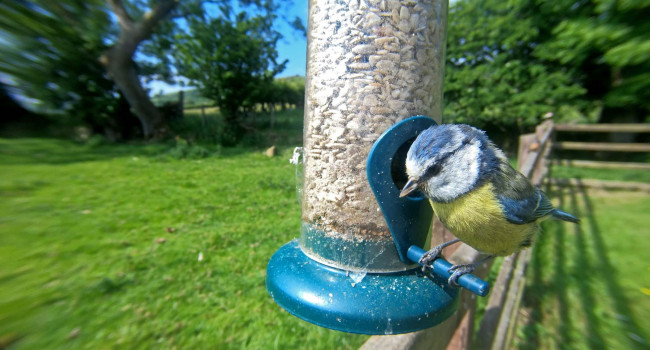


Share this page